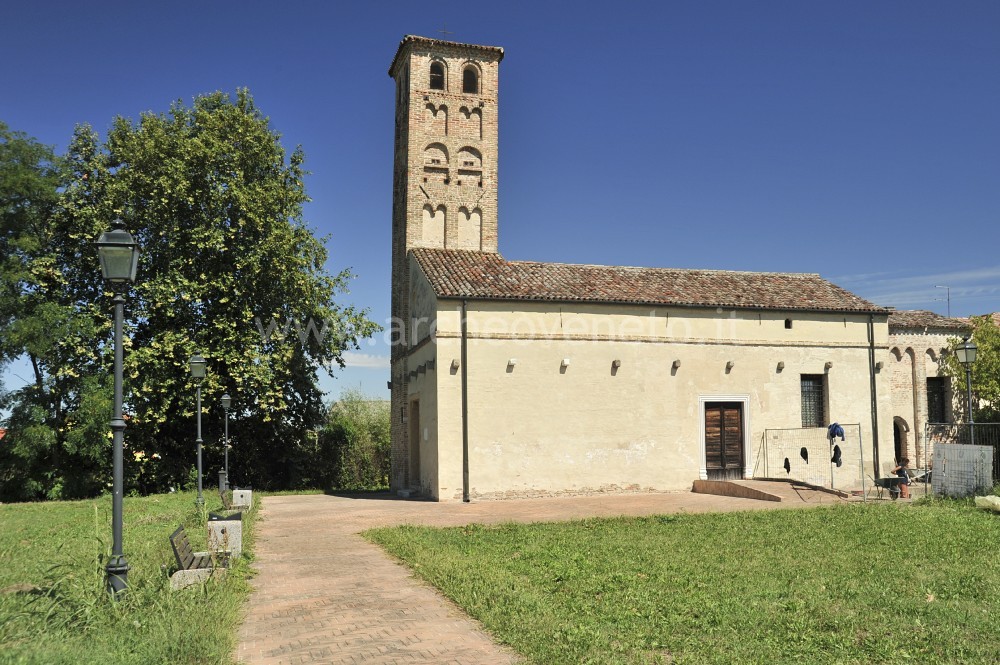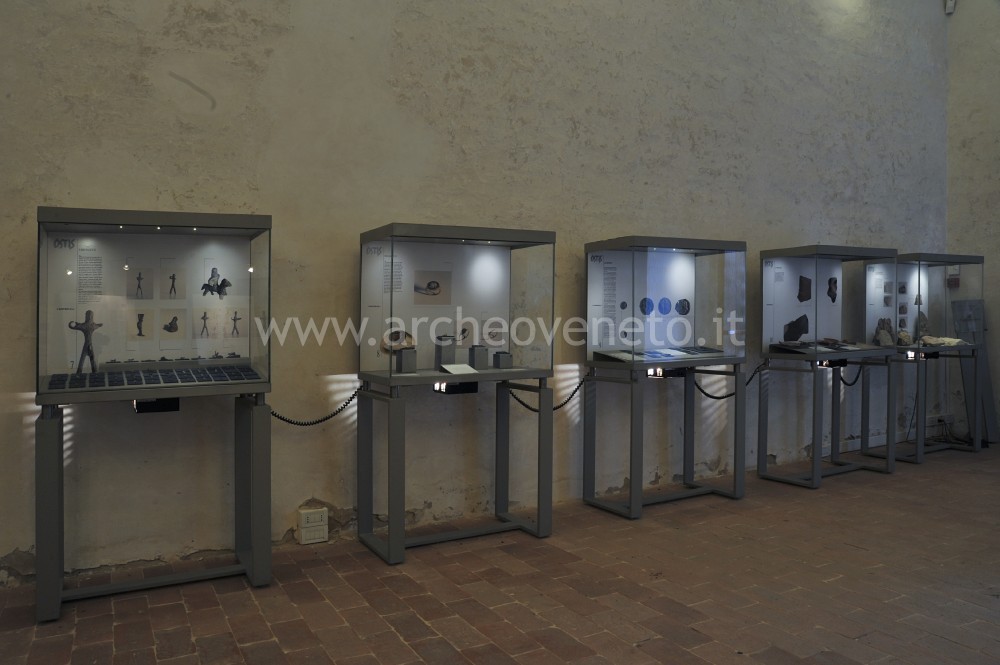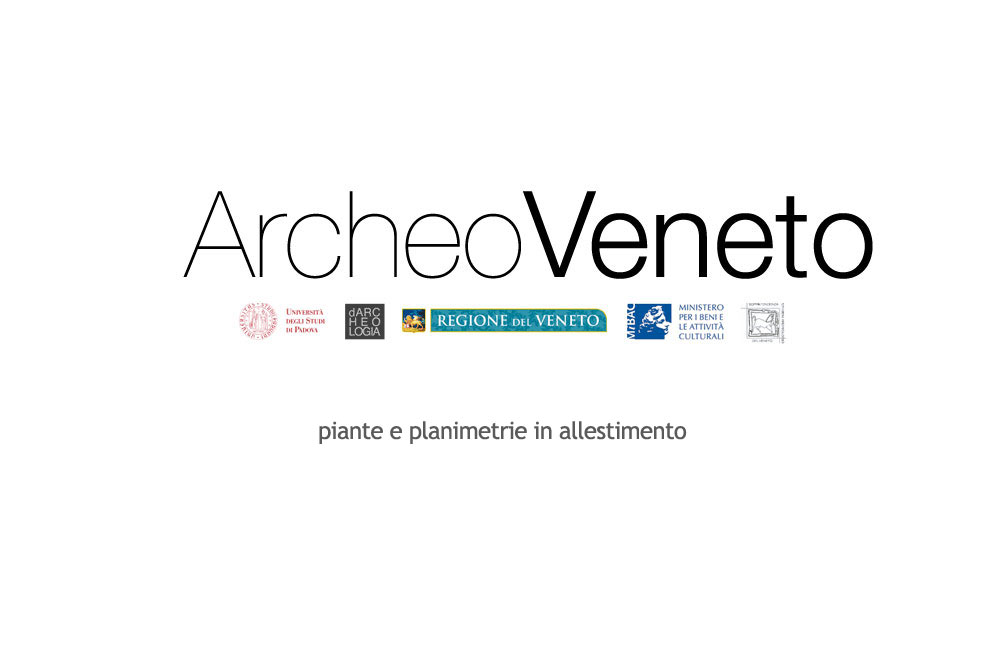|
|
File
Church of Santa Maria di Lugo – Campagna Lupia
|
Via Pio La Torre (Chiesa di Santa Maria di Lugo) – 30010 Campagna Lupia (VE)
– Fax 041 460017 (Fax Comune) |
  |
|
Summary

The Archaeological Museum of Campagna Lupia, located in the medieval church of Santa Maria di Lugo, collects the pre-roman and roman finds discovered in this site. The geophysical prospecting, the geo-sedimentological surveys and the excavations carried out in this area have led to the discovery of an architectural complex used as shrine, probably related to a branch of the Medoacus river, which can be traced back to a time span between 2nd cent. B.C. and 1st cent. A.D. The finds discovered in this area are located in five display cases inside the church.
Collection history
The first surveys carried out in the large architectural complex of Campagna Lupia were carried out by the Regional Board for the Protection of the Cultural Heritage of the Veneto region between 1990 and 1993. The finds were arranged in a collection in 1995, when the Archaeological Museum of Santa Maria di Lugo was inaugurated. In 2008 new surveys were carried out in the parvis of the church by the University of Padua, which led to the identification of a Venetian necropolis and a large pit containing pottery used for trade.
|

 There are five display cases on the right side, which contain the finds discovered during the excavation carried out between 1990 and 1993. The first one contains a large amount of pre-roman votive bronzes (3rd-2nd cent. B.C.), which display simple figurative patterns. Most of them depict male naked figures with open arms and legs wide apart. Next to this prevailing figurative pattern, it is also possible to see an ex-voto (a leg) and figures of small horses with horse riders. There are five display cases on the right side, which contain the finds discovered during the excavation carried out between 1990 and 1993. The first one contains a large amount of pre-roman votive bronzes (3rd-2nd cent. B.C.), which display simple figurative patterns. Most of them depict male naked figures with open arms and legs wide apart. Next to this prevailing figurative pattern, it is also possible to see an ex-voto (a leg) and figures of small horses with horse riders.
The second display case contains four wonderful golden rings of the Roman period (late 1st cent. B.C.-early 1st cent. A.D.), possibly donated to the shrine for favours received. The first one is a band ring with flat gem support and the inscription “OSTIS” engraved, the meaning of which is still unknown; the second one is a cameo glass and depicts a griffon assaulted by a snake; the third one is characterized by a glass gem depicting the goddess Roma in a sitting position; whereas the last one is a bar ring, with a small gem support bearing an ear of corn engraved.
The third display case contains a collection of eight coins of the Roman period. They are almost exclusively examples of bronze asses, plus a Venetic drachma.
The fourth case shows the ceramic materials discovered during the surveys carried out in the area of the shrine, which cover a time span from the late 2nd cent. B.C. to the first half of the 1st cent. A.D. They include bowls, grey clay paterae and vases, black varnish and north-italic sigillata pottery.
The last display case contains earthen architectural decorations (acroteria or small palms; antefixes with satyr or griffon faces), which decorated the roofs of the buildings related to the shrine.
|

Admission: Su prenotazione
Ticket: No
 School access School access
 Disabled access Disabled access
Opening Days
| Tipology |
When |
Specs |
| Summer/Winter |
Monday |
Upon reservation |
| Summer/Winter |
Tuesday |
Upon reservation |
| Summer/Winter |
Wednesday |
Upon reservation |
| Summer/Winter |
Thursday |
Upon reservation |
| Summer/Winter |
Friday |
Upon reservation |
| Summer/Winter |
Saturday |
Upon reservation |
| Summer/Winter |
Sunday |
15.00 – 18.00 |
Recommended tour time (minutes): 15
 Toilet Toilet
 Parking Parking
 Rest points Rest points
 Guide a stampa Guide a stampa
Brochure
Italian and English
 Information boards Information boards
Italian
 Captions under exhibits Captions under exhibits
Italian
 Multilingual ads: Inglese Multilingual ads: Inglese
Brochures
 Guided Tours Guided Tours
| Il santuario alle foci di un Meduaco. Indagini archeologiche a Lova di Campagna Lupia 1995, a cura di Bonomi S., Padova. |
| Carraro G. 2008, Tesori di Campagna Lupia. I reperti monetali del fondo Lazzari-Marchiori, Campagna Lupia. |
| Bonetto J. 2009, Veneto (Archeologia delle Regioni d’Italia), Roma, pp. 435. |
|

